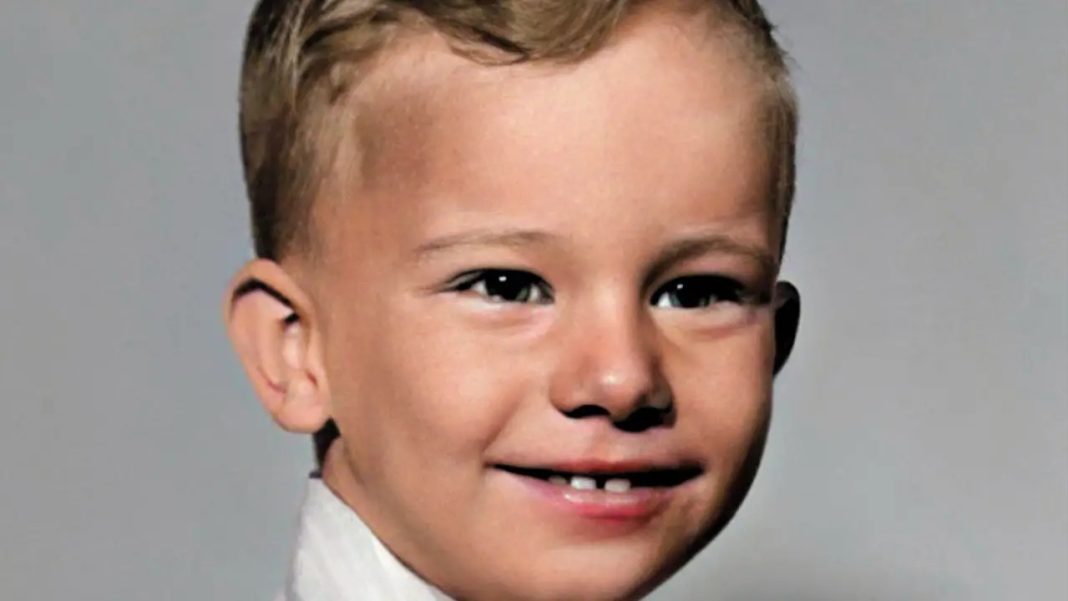The Disturbing Transformation of a Child into a Notorious Killer
The story of Jeffrey Dahmer, often referred to as the Milwaukee Cannibal, is one that begins with an innocent facade yet devolves into a chilling narrative replete with horror and depravity. Born on May 21, 1960, in Milwaukee, Wisconsin, Dahmer was welcomed into the world by parents whose aspirations for their firstborn son were bright. His father, a chemistry student, and his mother, a teletype machine instructor, envisioned a future filled with promise for their energetic and cheerful child. As a young boy, Dahmer exhibited a vivacious spirit, embodying the hope his parents harbored. However, a significant medical procedure shortly before his fourth birthday would irrevocably alter the course of his life.
Shortly before turning four, Dahmer underwent double hernia surgery, a relatively common procedure that started a chain reaction of emotional upheaval. Following this operation, noticeable changes began to surface in his demeanor. He transformed from a vibrant child into a withdrawn and quiet individual. Teachers at his elementary school later described him as timid and lonely, often appearing isolated and emotionally neglected. The turbulent dynamics within his family—his father’s academic pursuits that kept him away from home and his mother’s struggle with mental health issues, including depression and hypochondria—contributed significantly to this transformation. These early experiences of abandonment and uncertainty would leave an indelible mark on Dahmer, foreshadowing the chaos he would later inflict upon others.

The Troubled Home Life
Compounding the situation was the constant strife in Dahmer’s household. His parents’ marriage was fraught with conflict, leading to frequent arguments that created a toxic atmosphere. Reports indicate that his mother attempted suicide at least once, casting a long shadow over Dahmer’s formative years. As he navigated childhood, he experienced a profound sense of instability in his home life—a feeling that would later manifest in the chaos he would unleash upon society. The emotional neglect and turmoil experienced during his upbringing undoubtedly contributed to the emergence of unsettling interests that would characterize his later years.
At a disturbingly young age, Dahmer exhibited an obsession with death and decay. When he was only four years old, he witnessed his father removing animal bones from beneath their home. Intrigued by the sound these bones made, Dahmer began collecting them, referring to his morbid findings as his “fiddlesticks.” This fascination grew into a full-blown obsession, leading him to hunt for more bones and dead animals. In Bath Township, Ohio, he discovered a hut where he preserved small animal skeletons in jars of formaldehyde. His father, perhaps unaware of the ominous implications of his son’s fixation, even taught him how to bleach and preserve these animal remains, inadvertently reinforcing this disturbing behavior under the guise of scientific inquiry.

The Descent into Darkness
As Dahmer transitioned into his teenage years, his fascination with death took on a darker hue. He began collecting roadkill, dissecting the corpses, and burying them in makeshift graves adorned with skulls mounted on crosses. His obsession morphed into something more sinister when, at the age of 15, he committed a gruesome act: decapitating a dog’s carcass, nailing the body to a tree, and displaying the skull on a stick. These acts were not mere childish curiosities but rather indicative of a deeper, emerging darkness within him—a darkness that would fester and evolve over the years.
High school presented its own challenges for Dahmer. The once-quiet boy grew increasingly troubled, resorting to bizarre pranks as a misguided means of seeking attention from his peers. Beneath this façade of humor, however, lay a burgeoning darkness. By the age of 14, he developed a dependency on alcohol, often sneaking liquor into school and describing it as “my medicine.” As his parents’ tumultuous marriage reached a breaking point and a bitter divorce loomed, Dahmer found himself isolated in the family home shortly after graduating high school in May 1978. This isolation exacerbated his internal turmoil and propelled him toward a path of destruction.

The Birth of a Predator
It was during this vulnerable and chaotic time that Dahmer committed his first murder. On June 18, 1978, just three weeks after graduation, he picked up a hitchhiker named Steven Hicks. Dahmer lured Hicks to his home, where he ultimately murdered him—marking the beginning of a horrific 13-year killing spree that would claim the lives of 17 young men. Dahmer’s crimes escalated to unimaginable levels, involving acts of necrophilia and cannibalism, along with grotesque experiments aimed at creating compliant “zombies” by drilling into his victims’ skulls and injecting corrosive substances into their brains.
His reign of terror came to a shocking halt on July 22, 1991, when one of his intended victims managed to escape and alert the authorities. Police discovered a harrowing scene in Dahmer’s apartment, featuring photographs of dismembered bodies and severed heads—evidence of a lifestyle steeped in horror. The transformation from an innocent child who once played with animal bones to a cold-blooded killer was complete. Dahmer was later tried and sentenced to 15 consecutive life terms but met a brutal end, beaten to death by a fellow inmate on November 28, 1994, at the age of 34.
Dahmer’s life serves as a stark reminder of how early trauma and emotional neglect can manifest into unspeakable horrors. His story resonates deeply within the public imagination, functioning both as a chilling testament to the darkness that can reside within human beings and as a cautionary tale about the importance of nurturing and understanding the vulnerable in our society. The journey from a boy filled with hopes and dreams to one of history’s most infamous serial killers is a narrative that compels us to reflect on the complexities of mental health, familial relationships, and the dire consequences of unchecked trauma.

















